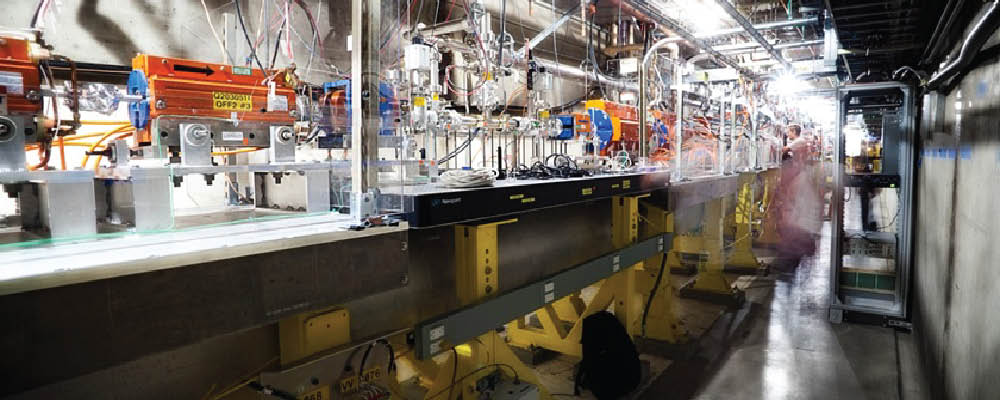Facility for Advanced Accelerator Experimental Tests (FACET)

Description
The Facility for Advanced Accelerator Experimental Tests (FACET), at SLAC National Accelerator Laboratory, began operation in April 2012 as a test bed for technologies that could power the next generation of particle accelerators. The first 20 sectors of the SLAC National Accelerator Laboratory’s two-mile-long linear accelerator generate high energy and high density electron and positron beams that enter the FACET experimental area. These beams are manipulated with magnets and other devices into short, intense pulses of electrons and positrons which enter an experimental region where plasma can be produced by the interactions of the incoming beams with resident gases. As the electrons and positrons move through the plasma they create a region of intense electromagnetic fields called “wakefields” that can further accelerate a trailing pulse of electrons or positrons to much higher energies. This resulting plasma wakefield accelerator is capable of achieving high energy particle acceleration in a region thousands of times shorter than is possible with conventional technology.
Science
High energy physics strives to unveil the fundamental nature of matter. Particle accelerators are used to produce high energy particle beams that allow researchers to probe the internal workings of target particles to discover what they are made of and how their constituents interact. Experimental machines require ever higher energies to "see" inside target particles with ever higher resolution. Providing such machines within feasible costs is a major challenge that calls for new, perhaps even radical, approaches to particle acceleration.
Early experiments in the 1990’s at SLAC’s first plasma wakefield experimental area, the Final Focus Test Beam (FFTB), showed that incoming high energy electrons can “surf” on waves of plasma and gain very high energies in very short distances. These and other experiments demonstrated that plasma wakefield acceleration has the potential to dramatically shrink the size and cost of particle accelerators. More recent experiments at FACET have shown that plasmas can accelerate and focus high-energy beams of both electrons and positrons. These experiments have demonstrated that the acceleration of electrons passing through the plasma occurs with extremely high energy gradients, or high acceleration per unit length. Plasma wakefields have produced acceleration in excess of 50 GeV per meter that have been sustained in a 0.85 meter long plasma channel, achieving about 3,000 times the energy gradient of the conventional SLAC linear accelerator. FACET research will push these results forward, extending high gradient plasma acceleration from beams of just a few particles towards the high intensity beams suitable for a future electron-positron collider of unprecedented energies. In addition, FACET researchers seek to make high-intensity, low-energy accelerators, suitable for applications at light-sources and in a wide range of industrial settings, more affordable, compact, and energy efficient.

